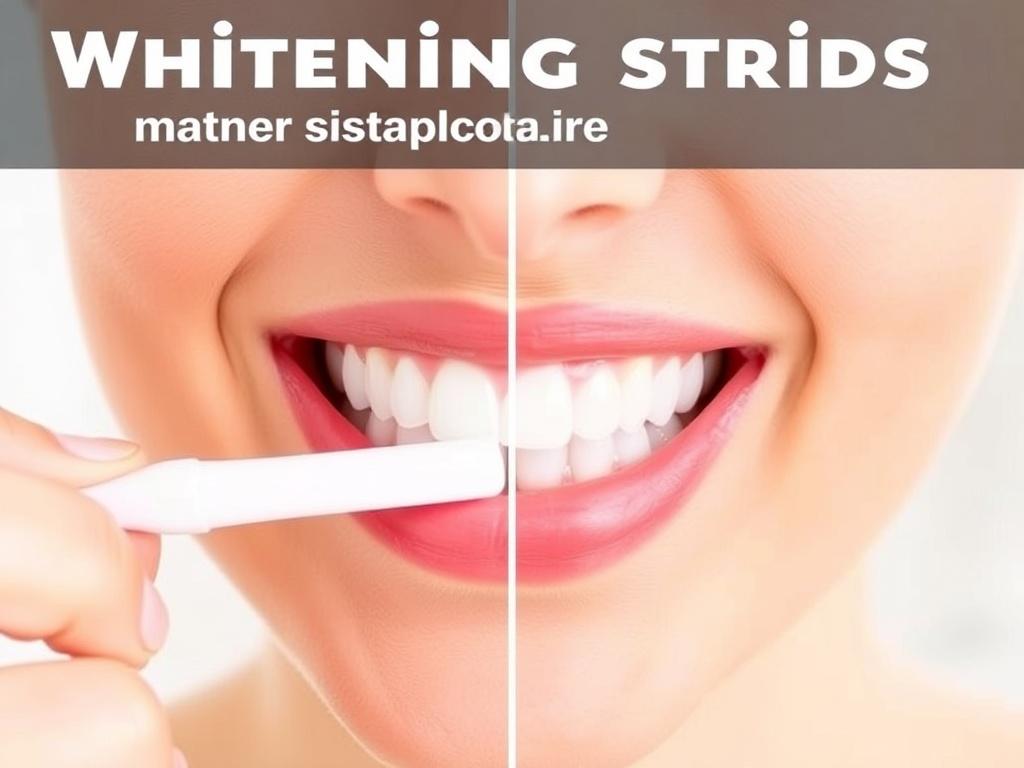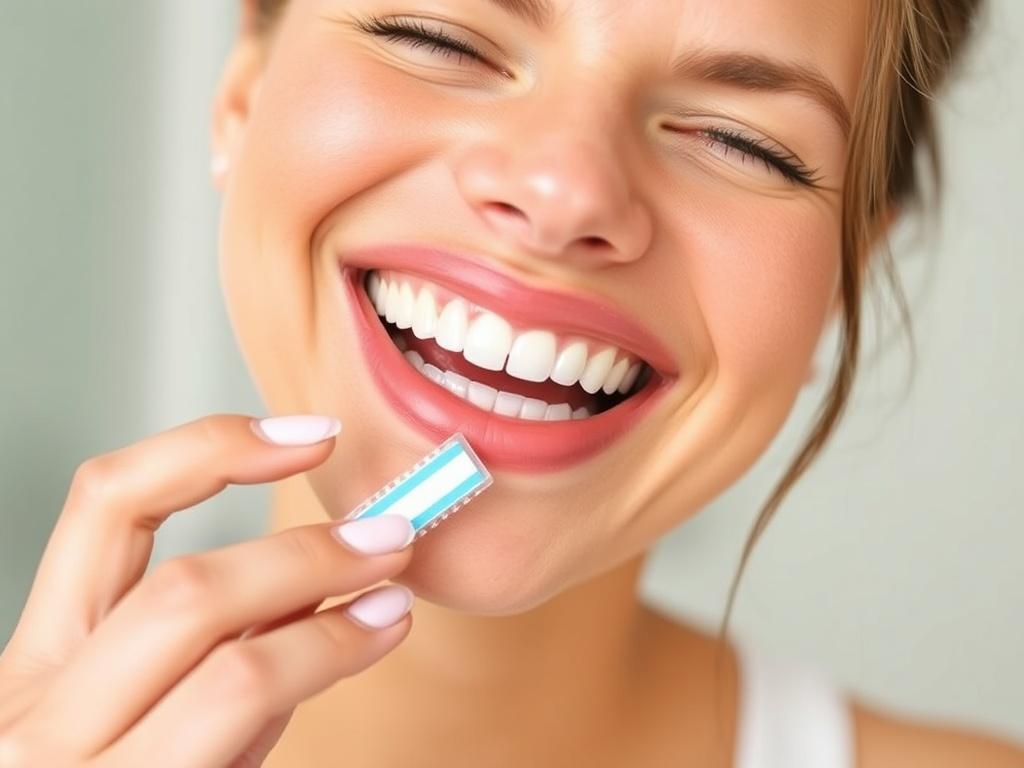When it comes to achieving a brighter, whiter smile, whitening strips have become one of the most popular and accessible options available today. You’ve probably seen them advertised on TV, sitting on drugstore shelves, or recommended by friends. But how do these whitening strips actually work, and are they the best choice for everyone? In this article, we’ll explore the ins and outs of whitening strips, diving into their advantages and disadvantages so you can make an informed decision before brightening your smile.
Содержание
- 1 What Are Whitening Strips?
- 2 How Do Whitening Strips Work?
- 3 Advantages of Whitening Strips
- 4 Disadvantages of Whitening Strips
- 5 Comparing Whitening Strips with Other Whitening Methods
- 6 Who Should Consider Using Whitening Strips?
- 7 Common Myths and Misconceptions About Whitening Strips
- 8 How to Choose the Right Whitening Strips for You
- 9 Final Thoughts on Whitening Strips
- 10 Summary Table: Whitening Strips Pros and Cons
- 11 Conclusion
What Are Whitening Strips?
Whitening strips are thin, flexible plastic strips coated with a peroxide-based gel, designed to be applied directly to the surface of your teeth. The active ingredients usually include hydrogen peroxide or carbamide peroxide, which help to break down surface stains and lighten the natural color of your teeth. Most whitening strips come in a convenient, easy-to-use format that allows you to whiten your teeth right at home, without the need for expensive dental visits.
The simplicity of whitening strips is one of the main reasons for their widespread popularity. Users typically wear the strips for about 20-30 minutes daily over a period of one to two weeks, depending on the product’s instructions. Because of their ease of use, whitening strips have become a go-to for anyone looking to boost their smile’s brightness with minimal effort.
How Do Whitening Strips Work?
The whitening action occurs because the peroxide molecules in the gel penetrate the tooth enamel and break down the molecules responsible for staining. These stains can be caused by various factors such as coffee, tea, red wine, tobacco, or simply the passage of time. By targeting these pigments at a molecular level, whitening strips make your teeth appear lighter and more radiant.
It’s important to note that whitening strips are most effective on surface stains. Deep or intrinsic stains—those originating from within the tooth—may not respond as well. This distinction is crucial when considering whether whitening strips are the right option for your needs.
Advantages of Whitening Strips

Whitening strips come with several benefits that make them an attractive choice for many individuals. Here are some of the top pros:
- Convenience: Whitening strips are incredibly easy to use. There’s no need for special equipment or visits to a dentist’s office, so you can whiten your teeth on your schedule.
- Affordability: Compared to professional teeth whitening treatments, whitening strips are much more budget-friendly while still delivering noticeable results.
- Accessibility: These strips are widely available at pharmacies, grocery stores, and online, meaning you don’t need a prescription or a dental appointment to get them.
- Gradual Results: Because you use the strips over a period of days to weeks, the whitening effect develops gradually, which often looks more natural than sudden brightening.
- Minimal Mess: Unlike whitening gels or trays that require application and can be messy, strips adhere directly to the teeth, reducing the risk of unwanted gel contacting your gums or tongue.
Disadvantages of Whitening Strips
While whitening strips have many perks, they’re not perfect for everyone. Let’s review some of the drawbacks to be aware of before you start your whitening journey:
- Potential Sensitivity: Whitening strips contain peroxide, which can cause tooth sensitivity or gum irritation in some users, especially those with sensitive teeth or existing dental issues.
- Uneven Results: Because strips only cover the front visible surfaces of your teeth, they may not whiten the sides or areas covered by the strip edges evenly, leading to patchy results.
- Temporary Effects: The whitening gains from whitening strips are not permanent. You will often need to repeat the treatment or use maintenance products to keep your smile bright.
- Not Suitable for All Types of Stains: Intrinsic stains caused by trauma, medications, or aging might not respond well to strips, meaning more intensive professional treatments may be necessary.
- Adherence Issues: Strips may not stick well to uneven or crooked teeth, which can limit their effectiveness.
Comparing Whitening Strips with Other Whitening Methods
When selecting a teeth whitening method, it helps to compare the popular options out there. Here’s a handy table contrasting whitening strips with other common treatments:
| Whitening Method | Cost | Convenience | Effectiveness | Duration of Results | Side Effects |
|---|---|---|---|---|---|
| Whitening Strips | Low to moderate | High – easy, at-home | Good for surface stains | Several months | Possible sensitivity or gum irritation |
| Professional In-office Whitening | High | Low – requires dental visit | Highly effective for various stains | 1 to 3 years | Temporary sensitivity common |
| Whitening Toothpaste | Low | High | Moderate – maintains whiteness | Ongoing use required | Rare sensitivity |
| Custom Dental Trays with Gel | Moderate | Medium – at-home but time-consuming | Effective for deeper stains | Several months to a year | Potential sensitivity |
Who Should Consider Using Whitening Strips?
Whitening strips are generally most suitable for individuals who have healthy teeth and gums, and whose discoloration is mostly due to surface stains caused by diet or lifestyle choices. If you are looking for an affordable, easy-to-use solution and don’t want to spend a lot of time or money, whitening strips can be an excellent choice.
However, if you have dental restorations like crowns or veneers, it’s important to note that whitening strips will not lighten these materials. Additionally, if you have sensitive teeth or gum problems, you should consult with your dentist before using whitening strips to avoid discomfort or damage.
Tips for Getting the Best Results from Whitening Strips
To maximize the benefits and minimize side effects, consider the following tips:
- Use whitening strips exactly as instructed — more isn’t always better and can increase sensitivity or gum irritation.
- Maintain good oral hygiene by brushing and flossing to reduce plaque buildup that can hinder whitening results.
- Avoid staining foods and drinks like coffee, red wine, or tobacco during and after treatment.
- If you experience sensitivity, try using toothpaste for sensitive teeth before and after the treatment period.
- Do not use whitening strips if you have cavities, gum disease, or periodontal issues without consulting your dentist first.
Common Myths and Misconceptions About Whitening Strips

There are many myths when it comes to teeth whitening, especially about whitening strips. Let’s debunk some of the most common:
- “Whitening strips will damage your teeth.” When used properly, whitening strips are safe and approved by dental professionals. Overuse or misuse, however, can cause sensitivity or irritation.
- “All whitening strips produce the same results.” The effectiveness and quality vary by brand and concentration. It’s important to choose reputable products.
- “Whitening strips can whiten crowns and fillings.” Unfortunately, no. These dental materials do not whiten, so if you have visible restorations, your results may not be uniform.
- “Whitening strips work instantly.”strong> Whitening strips typically take several days to weeks to show noticeable improvement.
How to Choose the Right Whitening Strips for You

Not all whitening strips are created equal. Here are factors to consider when selecting your product:
- Concentration of Peroxide: Higher peroxide levels can deliver faster results but might increase sensitivity.
- Duration of Treatment: Some strips require short daily application times, while others may involve longer wear times over several days.
- Brand Reputation: Look for brands with positive reviews and, ideally, dental professional endorsements.
- Compatibility with Sensitivity: Some strips are formulated specifically for sensitive teeth.
- Price: Consider how many treatments you get per package and whether refills are affordable.
Final Thoughts on Whitening Strips
Whitening strips offer a convenient, affordable, and effective means of removing surface stains and brightening your smile at home. They work best for people with generally healthy teeth looking to combat everyday discoloration caused by lifestyle habits. However, they are not a one-size-fits-all solution, and some may experience sensitivity or uneven results. If you have deeper stains, dental restorations, or gum issues, consulting a dental professional is always recommended before beginning any whitening treatment.
Additional Care and Maintenance After Whitening Strips
Once you’ve completed your whitening strip treatment, maintaining your new, brighter smile is key. Here are some ways to keep your teeth looking their best:
- Use whitening toothpaste for ongoing stain prevention.
- Limit intake of staining foods and beverages.
- Practice regular dental cleanings and checkups.
- Consider touch-up whitening strips or treatments as needed.
Summary Table: Whitening Strips Pros and Cons
| Pros | Cons |
|---|---|
| Easy to use at home | May cause tooth sensitivity |
| Affordable compared to professional treatments | Results may be uneven on crooked teeth |
| Widely available and accessible | Temporary results require maintenance |
| Minimal mess and quick application time | Not effective on all types of stains |
Conclusion
Whitening strips present an appealing option for anyone seeking a brighter smile without the hassle or high cost of professional treatments. Their convenience, affordability, and effectiveness for surface stains make them a popular choice, but it’s important to understand their limitations and possible side effects like sensitivity or uneven whitening. By considering your dental health, the type of staining you have, and your personal preferences, you can determine if whitening strips are the best fit for you. Always follow product guidelines carefully and consult a dental professional if you’re uncertain. With the right approach, whitening strips can help you achieve a confident, radiant smile you’re proud to show off.






